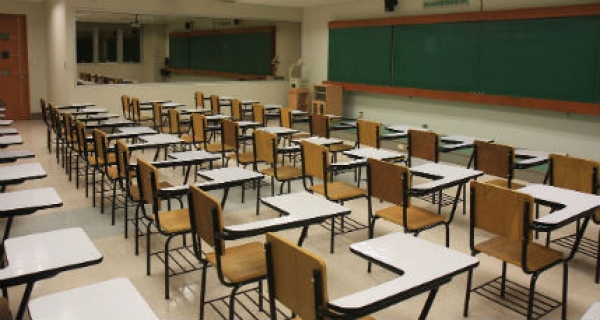One teacher shares her strategies to address possible student choice pitfalls like accountability and classroom management.
Many of students’ day-to-day activities are controlled by others, which may leave them feeling powerless, but teachers can empower their students through choice. In my teaching practice, I define student choice as the autonomy of choice and option in their learning. Students are given the power to choose what they learn and how they demonstrate their learning.
KNOW YOUR STUDENTS
Knowing your students is vital to a successful implementation of more choice in your classroom. In order for their learning to be authentic, it needs to be personalized. Get to know your students and their individual needs before diving into choice. One useful way to learn about your students is to ask them to write blogs. This can be a good way to learn about your students by providing them with writing prompts that explore their interests.
Learning becomes more authentic when students are given choice. For example, in an assessment for my students, they are required to include an argumentative writing piece. One of my artistically gifted students chose to illustrate her essay. She had all the components required to meet the standards, but her learning was more authentic because she chose to create something based on her personal skills.
Teachers often ask, “How do you hold students accountable in an environment with choice?” Begin by setting clear expectations. From the day students begin my class, I explain my intentions for the class and the role of choice in their work. Students are told they are in charge of their learning. Check-in often. I have frequent verbal or digital conversations with students about their progress. Teachers often ask, “What about the students that ‘choose’ not to do anything?” The best method of accountability in my class is self-correction.
Communicate with students about what they are choosing and why. Encourage ownership in their learning, including their mistakes. Students become more self-aware when given choice in their learning. Some students who elect to do nothing one day may respond with increased work productivity in the following class. While they may not make immediate perfect choices, they can self-correct and improve. If students struggle to self-correct, I talk with them about their choices. I may also contact a parent or guardian to discuss accountability. By giving the students choice, I give them the choice to become independent learners with the autonomy to fail but also the autonomy for authentic engagement.
START SMALL
Do not do a major overhaul of your entire practice. My journey with student choice developed over many years. I started with small ideas, like students choosing the way they respond to a prompt at the beginning of class. Pear Deck offers a digital tool that gives teachers the opportunity to enhance Google Slides presentations in different ways. I use this tool to allow my students with different ways to respond to a prompt with text responses or with visuals or drawings. I’ve experimented with students choosing their own texts to read. Once I found what worked not only for my students but for me as a practitioner, I worked to make my curriculum and instruction revolve around choice.
Classroom management is one concern when offering students more choice. Gauge the level of discipline in your classroom in order to address how many choices should be given. Student choice in my senior English IV class does not look the same as the choice in the first weeks of my sophomore English II class. For students who need a little more structure in their choice, I will offer a menu or list of choices to help ease them into self-directing their learning.
MAKE A PLAN
Student choice requires planning and commitment. One struggle I initially faced was students not knowing how to make choices in their learning. If they are finally given choice, they will need scaffolding to get used to the idea of freedom. Developing a list of options enables students to have a foundation while still having the autonomy to choose.
It is important to choose an instructional method that promotes choice in a way that is conducive to your classroom environment. Project-based learning (PBL) can be useful in implementing choice because students can select a topic of interest. For example, when reading Hamlet, we focus on social issues in the text. Students choose a social issue that they are passionate about and conduct a research study about the topic. They then create a product to bring awareness to or even solve the issue, and they present their products in a gallery-style presentation for faculty and administration.
FIND AND USE DIGITAL TOOLS
Digital tools can be useful in implementing student choice. For example, AdobeSpark is a learning tool that provides multiple ways of creating a product. Seesaw, a student engagement platform, allows students to type text, draw, or even record their learning. It also enables students to communicate with their peers. Wakelet, an online collection tool, enables students to create personalized sites for topics and collect resources and information to store on the site. In one of my classes, students created Wakelet pages based on a scientific theory of why the hysteria from the Salem witch trials occurred. Students chose their topics, created an essential question, and designed a Wakelet page that addressed their findings. Wakelet provides text elements, video, and audio elements for student responses.
By Lauren Gehr








